Fishing weights can help you catch more fish. However, the vast choice of different types of weights is often overwhelming for beginner anglers. If you want to choose the best fishing weight for your setup and rip its benefits, you must learn how and when to use each type.
If you want to cast your lure on a windy day without the risk of it coming back to smack you in your face, you need to use weights. Weights or sinkers will help you improve your casting distance and precision, help you stay in the bite zone, and enhance your bait’s anchoring ability.
They are a must in deep water too! When fish hide deep down, a light lure cannot reach them. This is where sinkers come in and save the day! They weigh your lure down just enough to get to the fish you are targeting.
Weights are also a necessity when surf fishing. Without them, your fishing bait would be swept away by strong currents or lost in high waves. Unfortunately, there are no universal weights you can use in all your fishing adventures. You’ll have to spend a little time learning about different fishing weight types.
The good news is that choosing the right fishing weight for your fishing style and presentation will help you improve your hook-up ratio and catch more fish. Are you ready?
Let’s start!
What Are Fishing Weights?
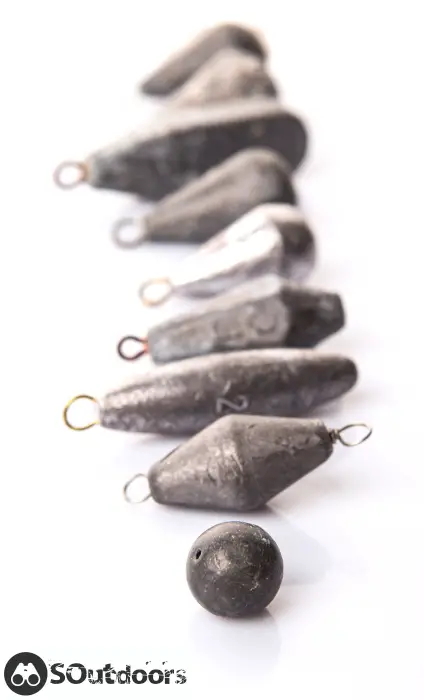
A fishing weight or a sinker is a small piece of metal. It is traditionally made from lead. Nowadays, you are more likely to find sinkers made from tungsten, steel, or brass.
Using lead weights has been banned in many states due to causing lead poisoning in wildlife. Hence, before you opt for cheap lead sinkers, check the regulations in your state. The principal purpose of fishing weights is to sink your bait or lure, or keep it in the strike zone. They also enable you to cast your line to greater distances.
Fishing weights can be used with most fishing styles but are necessary for bottom fishing, deep drop fishing, deep sea fishing, and surf fishing. They come in many different weights and shapes. The choice can be pretty overwhelming, especially for first-time users.
Yet, do not feel tempted to pick up the first set of weights you come across. Every weight has its own purpose. Keep scrolling, and you’ll always pick the best fishing weight for your setup!
Types Of Fishing Weights: When & How To Use Them
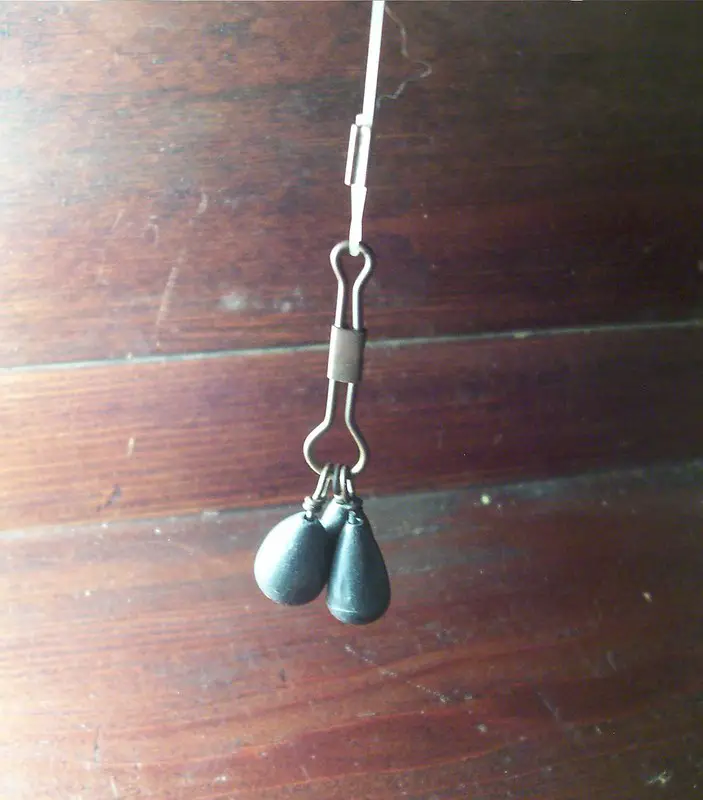
Fishing weights can be used in almost any fishing scenario. However, as I have already explained, understanding what type of fishing weight to use in a particular situation can significantly improve your odds of success.
How To Choose The Best Fishing Weights For Your Setup?
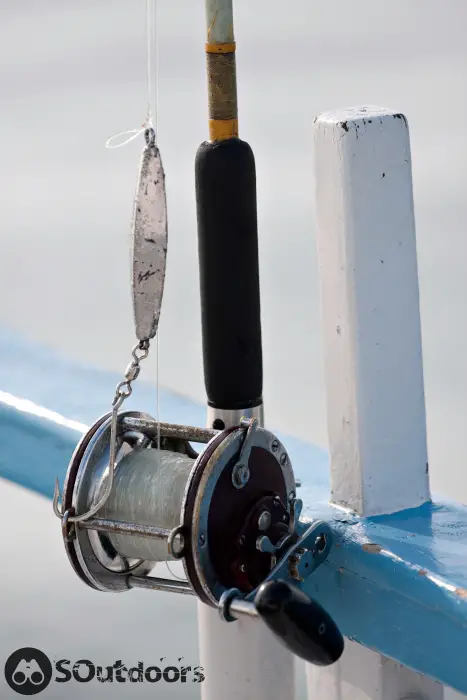
First of all, you must consider your fishing style. You also have to take into account the fishing environment, your tackle (most of all, the weight your rod can handle), and the fish you are targeting. For example, panfish such as bluegill do not require using weights.
If you use too much weight, you might not feel the bite in time to act. Besides, fish might be taken aback by their weight and drop the bait before getting hooked. If your weights are too light, you might not be able to reach (or stay in) the bite zone.
So, how heavy should your fishing weights be?
You must try to find the ideal balance. In my humble opinion, it is best to use the minimal weight that works in your fishing conditions. The size of sinkers ranges from a fraction of an ounce to several pounds.
Light weights are used for light-line fishing and small fish rigs, while heavy weights are used for dropping big baits in deep oceans. In general, 5 to 8 oz weights cover most applications in both fresh and saltwater.
To learn where and how to position sinkers on your fishing line, watch the following video:
Different Types Of Fishing Weights
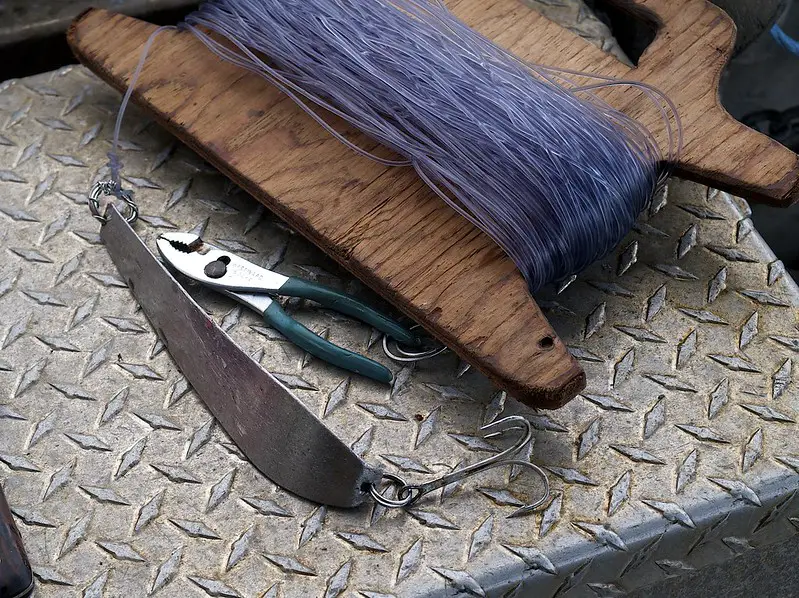
All weights can be divided into three principal groups:
- Standard fishing weights (used for casting and retrieving)
- Bigger fishing weights (used for holding bait and lures anchored)
- Flexible fishing weights (used for trolling)
Here is a short list of different types of fishing weights:
- Split-shot sinkers (the most popular choice among anglers)
- Bullet sinkers (worm weights)
- Egg sinkers (sliding sinkers)
- Rubber core sinkers (dog-ear sinkers)
- Flat sinkers (coin weights)
- Bank sinkers
- Pyramid sinkers
- Bell sinkers
- Claw sinkers
- Drop shot sinkers
- Pencil sinkers
- Insert weights
- Hook weights
Do not be intimidated. You can start by learning about the category that fits your fishing style. Once you master that, you can expand your knowledge by reading about the other types of fishing weights.
Let’s discuss everything in more detail!
Split-Shot Sinkers
Split-shot weights are the most popular of them all. I think all anglers have at least one split-shot weight in their tackle box.
Split shots are readily-available, highly versatile, reusable, and very easy to use. Besides, they can be used for fly fishing, one of the most popular fishing techniques.
Split shots are little weights that can go onto your fishing line, swivel, hook, or lure – it all depends on what you are trying to achieve. You can even attach a split shot weight directly on a spinner-blade arm and sink it faster, but do mind that it will change how your lure behaves in the water.
You do not need any experience to use split shot weights. Simply position the “jaws” of the sinker around your fishing line (or wherever you want to place the weight) and use your fishing pliers to pinch it tightly. You can even use your teeth to do it.
Split-shots are not expensive, so I recommend you always carry a few smaller ones in your tackle box. You can place a few sinkers in a row if you need extra weight for your setup. Do you want to find out what split shooting is and why you need to try it? Watch this video:
Bullet Weights
A bullet sinker, or a worm weight, is a cone-shaped fishing weight with a hole in the middle. Bullet weights are most often used for bass fishing with soft plastics, but can also be used for trout fishing, catfish fishing, and sea fishing (including light line surf fishing). These fishing sinkers do not get snagged easily and are thus perfect for fishing in heavy vegetation, too.
Worm weights are very user-friendly. All you need to do is slide one onto your fishing line before tying a hook. They are made from lead or tungsten and usually range from one-sixteenth of an ounce to an ounce. If you are not fishing in rocky areas, you can use a bullet weight over an egg sinker.
Egg Sinkers
Egg sinkers are inexpensive egg-shaped fishing weights that feature a hole in their body. The fishing line goes through the hole and moves freely without the risk of getting stuck in weed. As a result, fish can swallow your bait and continue swimming, setting the hook on their own.
Depending on their weight, egg sinkers can be used to keep your bait glued to the bottom, or to let it roll and tumble across the riverbed or seabed. The latter is ideal when you aim to cover a lot of ground in a single cast.
The most common setup is to pass a fishing line through the egg sinker and connect it to a snap swivel and a leader (at least a couple of feet long). You can use either a barrel snap-swivel or a ball-bearing one. A plastic bead can be used to separate the weight and the swivel and prevent tearing up the knot.
Egg sinkers are often used for light line fishing, usually as part of a Carolina Rig setup. You can use this setup on any coastline to catch fish from the shore. Anglers often use sliding sinkers for targeting Northern Pike too.
Rubber-Core Sinkers
Rubber-core sinkers are often called dog-ear or clasp-on sinkers since they clamp directly to the fishing line. They are practical and easy to use, making them a great option whenever you are in a hurry.
Rubber-core weights are quite heavy and are generally used when anglers want to sink their bait very fast. However, many anglers avoid using them because they often cause line twists. They also get caught up in underwater vegetation easily and do not handle rocks well.
Flat Sinkers
Flat sinkers, or coin sinkers, are ideal for sit-and-wait bank fishing on a river or in a tidal zone. They are very popular among carp fishing enthusiasts.
These sinkers typically feature a metal hoop on the top, allowing the fishing line to move freely. Thanks to that, you can leave your bail open. Of course, you must have an indicator to alert you when you get a strike.
Flat weights should always lay flat on the bottom. They are not supposed to roll across it like egg sinkers. If they do, you should use heavier ones.
Bank Sinkers
A bank sinker is a popular fishing weight shaped like a teardrop. It rolls through banks and surfs quite easily. Unfortunately, that is not always a good thing. If you fish in harsh conditions, bank sinkers can twist up your fishing line. Luckily, they are easy to retrieve.
Pyramid Sinkers
A pyramid sinker is an excellent option for bank anglers who want to sink their bait to the bottom. As you can already assume, a pyramid sinker is a pyramid-shaped fishing weight. The line goes through a metal loop located on its top, but you can also purchase a so-called sinker slide to change your weights more easily.
Pyramid sinkers can be used for both freshwater fishing (for example, when targeting walleye in a deep lake) and saltwater fishing (for instance, targeting sharks on the California coast). They are a bit pricey and come in many sizes.
The technique for casting pyramid sinkers is always the same. You must cast the weight, not your bait. So, choose the area your weight should land in and use your fishing rod to fling it through the air.
Bell Sinkers
A bell sinker is quite a popular choice due to the freedom of movement it gives to the bait and its resistance to snags. It is often called a bass casting sinker. Of course, this fish sinker is shaped like a bell. It has a brass loop or a lead eye at its tapered top on which to attach your line.
Claw Sinkers
A claw sinker has two parts: a round sinker weight and the metal wire spikes surrounding it and acting as barbs. Claw sinkers are mostly used for surf fishing on sandy terrain, especially in strong currents.
The principal purpose of a claw sinker is to prevent the bait from getting swept off by the current. When you cast claw sinkers, you need to tug your line so that claws can dig into the sand and keep your rig in place.
Drop-Shot Sinkers
A drop-shot sinker is a ball-shaped fishing weight with a wire loop on its top. You should attach your leader to the loop (I recommend using a Palomar Knot), and tie the hook 6 – 8 inches above it.
A drop-shot sinker can be switched rather easily. It can get your bait at any desired depth too. Since the sinker is positioned under the bait, the bait can move in the water and thus appears more natural.
Drop shot rigs are quite popular among dock and boat anglers. However, you can use them for fishing from the shore too.
Watch a video below to learn how to rig a drop-shot sinker:
Pencil Sinkers
Pencil sinkers are, as their name suggests, weights shaped like pencils. These sinkers can be purchased ready-made or in the form of a coil. If you opt for the latter, you need to uncoil the desired length, cut it off, and punch a hole at one end of it.
Pencil weights sink very quickly – it is their greatest asset. They are ideal for fishing in fast, deep water. They do not easily get caught up in debris.
A pencil-shaped fishing sinker is excellent for targeting steelhead and salmon. However, these species inhabit different levels of the water column, and you have to regulate the weight of your sinker accordingly.
Walking Sinkers
Walking sinkers are often called walleye sinkers since they mostly serve for targeting wily walleye, however, you can use them to target fish such as the North American perch too. They can be banana-shaped, yet, the most widely used walking sinker is the Lindy No-Snagg.
These weights are generally used for slow-trolling or drifting since they can be dragged across the bottom. You should combine them with natural lures, such as minnows or nightcrawlers.
Due to its unique shape, a walking fishing sinker rarely gets caught up in underwater vegetation, branches, or rocks.
Barrel Sinkers
You can use barrel sinkers whenever you need a slim line sinker. They are most commonly used for trolling and maintaining the buoyancy of a float rig. Many anglers use this type of weights to target Luderick and other similar species.
Insert Weights
Insert weights or nail weights are mainly used for soft plastics. They are ideal for fishing in heavy cover. You can combine these weights with natural bait such as minnows as they will prevent them from falling apart
Hook Weights
As their name implies, hook weights should be placed directly onto your fishing hook. They need to be folded around the hook shank, giving it a better balance and allowing your bait to sink deeper. You can also purchase pre-weighted hooks.
FAQs
What are the different types of fishing weights?
There are many different types of fishing weights, such as split-shots, bullet sinkers, egg sinkers, rubber core sinkers, flat sinkers, bank sinkers, pyramid weights, bell sinkers, claw weights, drop shot weights, pencil weights, insert weights, and hook weights.
How heavy is a size 2 sinker?
A size 2 sinker is about 7 grams or 0.25 ounces in weight. A size 2 can be used in numerous applications, but are most commonly used for light line fishing.
How do I choose lure weight?
You should use your lure weight in accordance with your fishing equipment. The heavier the lure, the heavier your fishing rod needs to be. An ultra-light rod can have a lure weighing up to 1/8oz, while heavy-action rods can have a lure weighing 1 oz or more.
What are the weights on a fishing line called?
The weights on a fishing line are called leads, sinkers, or plunders. They have two significant roles – to provide enough weight to anchor your rig and secure sufficient casting distance.
What's the difference between a sinker and a weight?
There is no difference between a sinker and a weight. Both terms “weight” and “sinker” mean the same and refer to a piece of metal used to anchor a fishing bait.
My Final Thoughts
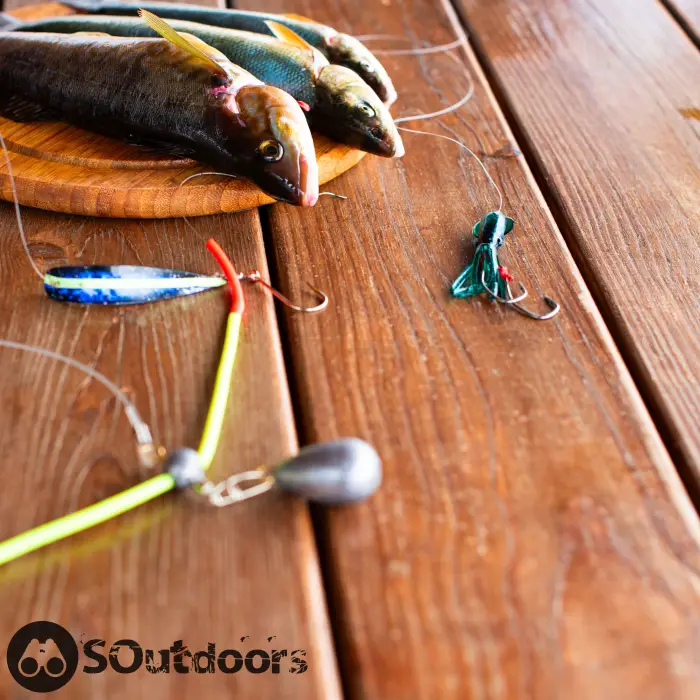
Weights can help you improve your hook-up rate and target deep water species. Unfortunately, the choice of different weight types can be overwhelming for a beginner angler. It can also be a challenge to choose the right sinker size.
This is why you should bookmark this article and get back to it whenever you need help with using fishing weights. If you still have trouble finding the best weight for your setup, leave a comment, and I’ll do everything I can to assist you.
